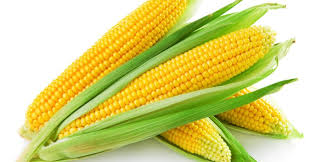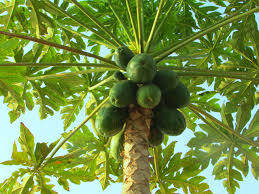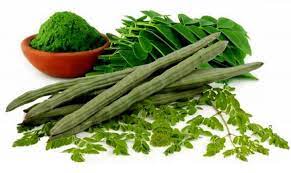
Maize or corn is a cereal crop that is grown widely throughout the world in a range of agroecological environments. More maize is produced annually than any other grain. About fifty (50) species exist and consist of different colors, textures and grain shapes and sizes. White, yellow and red are the most common types. The white and yellow varieties are preferred by most people depending on the region.
Maize was introduced into Africa in the 1500s and has since become one of Africa’s dominant food crops. Like many other regions, it is consumed as a vegetable although it is a grain crop. The grains are rich in vitamins A, C and E, carbohydrates, and essential minerals, and contain nine percent (9%) protein. They are also rich in dietary fiber and calories which are a good source of energy.
Maize is the most important cereal crop in sub-Saharan Africa (SSA) and an important staple food for more than one billion, two hundred million (1,200,000,000) people in sub-Saharan Africa (SSA) and Latin America.
All parts of the crop can be used for food and non-food products. In industrialized countries, maize is largely used as livestock feed and as a raw material for industrial products. Maize accounts for thirty to fifty percent (30−50%) of low-income household expenditures in Eastern and Southern Africa.
Worldwide production of maize is seven hundred and eighty-five million (785,000,000) tons, with the largest producer, the United States, producing fourty-two percent (42%). Africa produces six point five percent (6.5%) and the largest African producer is Nigeria with nearly eight million (8,000,000) tons, followed by South Africa. Africa imports twenty-eight percent (28%) of the required maize from countries outside the continent.
Most maize production in Africa is rain fed. Irregular rainfall can trigger famines during occasional droughts.
According to a food and agriculture organization (FAO) estimates (2007), one hundred and fifty-eight million (158,000,000) hectares of maize are harvested worldwide. Africa harvests twenty-nine million (29,000,000) hectares, with Nigeria, the largest producer in sub-Saharan Africa (SSA), harvesting three percent (3%), followed by Tanzania.
Worldwide consumption of maize is more than one hundred and sixteen million (116,000,000) tons, with Africa consuming thirty percent (30%) and sub-Saharan Africa (SSA) twenty-one percent (21%).
However, Lesotho has the largest consumption per capita with one hundred and seventy-four (174) kilogrammes per year. Eastern and Southern Africa uses eighty-five percent (85%) of its production as food, while Africa as a whole uses ninety-five percent (95%), compared to other world regions that use most of its maize as animal feed.
Ninety percent of white maize consumption is in Africa and Central America. It fetches premium prices in Southern Africa where it represents the main staple food. Yellow maize is preferred in most parts of South America and the Caribbean. It is also the preferred animal feed in many regions as it gives a yellow color to poultry, egg yolks and animal fat.
Maize is processed and prepared in various forms depending on the country. Ground maize is prepared into porridge in Eastern and Southern Africa, while maize flour is prepared into porridge in West Africa. Ground maize is also fried or baked in many countries.
In all parts of Africa, green (fresh) maize is boiled or roasted on its cob and served as a snack. Popcorn is also a popular snack.
Corn starch, sometimes referred to as corn flour, is a carbohydrate extracted from the endosperm of corn. This white powdery substance is used for many culinary, household, and industrial purposes. In the kitchen, corn starch is most often used as a thickening agent for sauces, gravies, glazes, soups, casseroles, pies, and other desserts.
Because corn starch is made from corn and only contains carbohydrates (no protein), it is a gluten-free product. For this reason, corn starch is an excellent gluten-free alternative to flour thickeners in recipes.
This report examines the financial viability of establishing a maize starch processing plant in Nigeria that would produce maize starch, corn gluten meal, maize germ, corn fiber meal and high concentrated steeping liquid (CSL) through the wet milling process.
Corn gluten meal is a by-product of the manufacture of maize starch (and sometimes ethanol) by the wet-milling process (RFA, 2008). Corn gluten meal is a protein-rich feed, containing about sixty-five percent (65%) crude protein (DM), used as a source of protein, energy and pigments for livestock species including fish.
Maize fiber is a mixture of the seed coat and remaining endosperm of the kernel after the extraction of the starch, gluten and germ. The fiber produced from the corn wet milling process is somewhat more digestible than in the dry form.
Corn steep liquor is a by-product of corn wet-milling. Corn Steep Liquor (CSL) Corn steep liquor is a high-protein, high-energy feed ingredient made from the soluble parts of the corn kernel through a steeping process. It is a viscous liquid mixture consisting entirely of water-soluble components of corn steeped in water.
Corn Steep Liquor (CSL) has been used as a fermentation nutrient supplement in several different fermentations.
Corn Germ is the endosperm of Maize grain; it is a yellow colored seed, pleasantly nutty in taste and rich in oil. Maize germ is a high energy, very palatable and digestible feed offering a good source of 'slow release' starch.
The production capacity of the proposed plant is one hundred (100) tons per day and would operate three (3) shifts of eight (8) hours each for three hundred (300) working day at eighty percent (80%) of the installed capacity.
Do you want more details about the subject matter?
You can order our detailed feasibility report on corn starch production in Nigeria by clicking on the link below.
CORN STARCH PRODUCTION IN NIGERIA; THE FEASIBILITY REPORT.
Anaekwe Everistus Nnamdi Ikechukwu is a business development consultant and the chief research officer of Foraminifera Market Research Limited.
Contact us with any of the details provided below to arrange a meeting
Office Phone Number: 01- 295 24 13 (Monday – Saturday; 8 am – 5 pm)
Mobile Number: +234 (0) 8033782777 (Monday – Saturday; 8 am – 6 pm)
E-Mail Address: foraminiferaltd@gmail.com
CC: foraminiferamarketresearch@yahoo.com
Office Address:
61-65 Egbe- Isolo Road,
Iyana Ejigbo Shopping Arcade,
Block C, Suit 39,
Iyana Ejigbo Bus Stop,
Ejigbo, Lagos.






















